|
||||||||||
|
FEATURESNo Snow on the Broken Bridge 断桥无雪 An interview with Yang Fudong 杨福东Claire Roberts The Australian National UniversitySince the late 1950s, the Zhejiang Academy of Fine Art (Zhejiang Meishu Xueyuan 浙江美术学院, now the China Academy of Art, Zhongguo Meishu Xueyuan 中国美术学院), the main campus of which is on Nanshan Street 南山路 within view of West Lake, has trained generations of artists. The present academy, also called the China National Academy of Art, as distinct from its similarly prestigious sister institution in Beijing, was founded in 1928 as the National Academy of Art (Guoli Yishuyuan 国立艺术院) by the educator Cai Yuanpei (蔡元培, 1868-1940) and the artist Lin Fengmian (林风眠, 1900-91). Yang Fudong is a graduate of the academy. A number of his acclaimed works engage with West Lake, Hangzhou and how the past lives within the mélange that is contemporary China. In introducing Yang's multi-screen video work No Snow on the Broken Bridge we visit again one of the Ten Scenes of West Lake. It is a scene that features frequently in this issue of China Heritage Quarterly, but now we regard it from another more contemporary yet also timeless angle. This art work was made at another of the iconic Ten Scenes, 'Lotus in the Breeze at the Crooked Courtyard' (Qu yuan feng he 曲院风荷), and at Guo Villa (Guo Zhuang 郭庄), a restored private lakeside residence built in 1851 at the West Inner Lake of West Lake (Xihu Xi Lihu 西湖西里湖). The art historian Claire Roberts was invited by Gene Sherman to interview Yang for an exhibition of his work presented by the Sherman Contemporary Art Foundation (SCAF), Sydney, 18 May-4 June 2011, under the title Yang Fudong: No Snow on the Broken Bridge. Claire also wrote an essay for the catalogue for that show, for which we have been given kind permission by SCAF to reproduce here, along with excerpts from the interview. The exhibition catalogue is available here. The stills from Yang's video work accompanying the essay and interview were provided courtesy of Yang Fudong, ShangART Gallery, China, and Sherman Contemporary Art Foundation, Sydney. For clips from another of his works, Seven Intellectuals in the Bamboo Forest (Zhulin qi xian 竹林七贤) made over the years 2003-2007 and exhibited at various locales including, in 2009, at the Asia Society in New York in 2009.—The Editor Yang Fudong: Beauty and CrueltyThere is just one image of Yang Fudong in the 'personal photo album' on his website, a colour photograph taken in Tian'anmen Square. His bespectacled eyes meet those of the viewer with a degree of reserve, his long hair tousled by the wind. Behind him, gazing out over his left shoulder, is Mao Zedong, whose omnipresent painted portrait has hung over Tian'anmen Gate since 1949. The photograph was taken some years ago by a photojournalist for a Shanghai magazine profile. Yang's wife, a novelist, liked the image because the eyeglasses, which he does not normally wear, 'made him look cultivated'. The dual portrait suggests a multiplicity of complex narratives that inform contemporary Chinese culture, including the relationship between the past and the present; the state and the individual; art and propaganda; painting and photography; myth and reality; beauty and cruelty.[1] 
Yang Fudong's family comes from Xianghe (meaning Fragrant River), a village in Hebei, two hours by car north-east of Beijing. The rural settlement is similar to that featured in his bleak documentary-style film East of Que Village, 2007. Included in the 2010 Sydney Biennale, the six-channel work filmed in winter features dogs. 'They look like wild dogs,' Yang says, 'and yet they cannot leave the village… They depend on people to survive, but they are not people …They were aggressive and scary but they were also prone to dying in winter.' Yang was born in 1971 and grew up in a military compound where his father belonged to an infantry unit that was part of a garrison for the defence of Beijing. Yang was a model student and top of the local school in the three areas that counted most: moral conduct, academic study and physical education. When he injured his leg playing soccer, he quickly discovered a passion for drawing. A combination of aptitude and hard work got him out of the military compound and into the middle school affiliated with the Central Academy of Fine Arts (CAFA) in Beijing, a feeder for China's most prestigious art academy. But to Yang's disappointment he was not offered a place at CAFA. Instead, with some trepidation, he travelled south to study oil painting at the equally well-regarded China Academy of Art in Hangzhou, a city that is famous for its gardens and the West Lake. It was a turning point in his life. 
Yang graduated in 1995 but was frustrated with oil painting. He speaks of his difficulty in finding a natural or comfortable painting method. His graduation work was a series of four huge paintings, totalling some seven metres in length, painted in what is in retrospect a rather filmic manner, with multiple disorienting and overlapping images concerned with city pollution, policing and safety, and for which he was given an assessment of three out of five. But the work that best indicates his future creative direction was a performance conducted over a three-month period in 1993 (not part of his formal assessment), in which he did not speak and all communication was written on his hand. Through this bodywork, titled That Place, Yang was able to slow down and, he says, think independently. He saw things more clearly and began to ponder the metaphysical dimension of life and art. He became interested in consciousness, and in particular the consciousness of educated youth, like himself. In the years since then Yang Fudong has become one of the most interesting contemporary Chinese artists working in the area of photography, video and film. What is remarkable about his work is the way in which he has been able (when he has wanted) to make connections with the visual and aesthetic cultures of China's past and yet remain very much of the present. He plays with memory and myth and is a master of pictorial allusion and affect. He is not overwhelmed by China's visual past, seeing it as a complex language that continues to evolve, and to which he is connected. In conversation, for example, he talks of his admiration for the modern brush-and-ink painter Fu Baoshi 傅抱石 (1904–65) who, he says, 'did something different. With his figures painted in an antique mode he moved things forward a lot… His paintings are beautiful… He is like a hot-blooded youth. His paintings give you a feeling of the extraordinary.' 
In No Snow on the Broken Bridge (2006), a work that refers to the phrase 'Lingering Snow on the Broken Bridge', one of the acknowledged 'Ten Famous Views of the West Lake', Yang Fudong makes sophisticated use of artistic language: a monochrome palette; striking juxtapositions of close-up and distant views; young men and beautiful women (some in drag); landscape (mountain and water); rocks and trees; willow shoots and plum blossom; wind and snow; silk and fur; poetry and music; action and suggestion. Visually seductive images are projected onto eight large screens that immerse us in a familiar yet unfamiliar world of Yang Fudong's making; interconnected narratives without beginning or end that captivate and confound us until we choose to look at another screen, or move on. People promenade in pairs or foursomes, exploring the environment—rustic pathways and tea plantations, gardens and lakeside pavilions—and their inner selves; and go boating on the West Lake to better appreciate the view of the 'Broken Bridge'. The appearance of a mountain goat on a leash and a cockatoo tethered to a carrying frame suggests subservience and a desire to treat animals and birds as objects of curiosity or aesthetic pleasure—an expression of beauty, kindness or cruelty? Yang's photographs and films are about moods and sensibilities, thoughts and feelings, escape and entrapment, truth and deception. They plumb emotional depths, drawing strength from deeply felt aspects of life and culture. Yet at the same time they are questing and questioning, empty and illusory, using visual and sensory means to give form to things that have no form. We are overwhelmed by the disconcerting beauty portrayed in No Snow on the Broken Bridge, a beauty that exists in places that are deeply familiar; just as in the case of East of Que Village, it is the unrelenting harshness and cruelty within the ordinary that strikes us. … 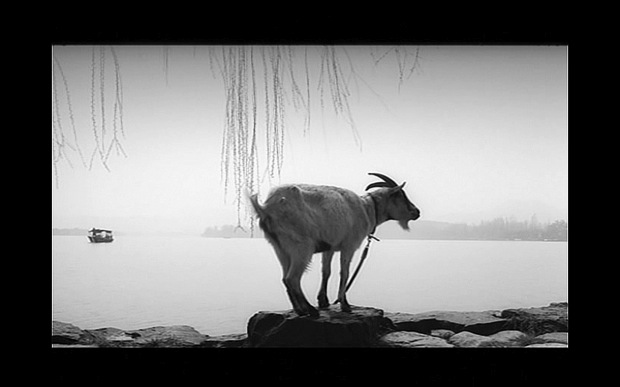
InterviewThis interview with Yang Fudong was conducted by Claire Roberts in Shanghai on 28 November 2010, and in a follow-up telephone conversation on 14 January 2011. The material was also edited and translated by Roberts.—The Editor CR: What did you hope to achieve in No Snow on the Broken Bridge? Why did you make this film? YFD: Hangzhou is where I went to art school and the landscape of Hangzhou is typical of southern China. One of the most famous views there on the edge of the West Lake is known as 'Lingering Snow on the Broken Bridge'.[2] My film is called No Snow on the Broken Bridge, indicating a difference. The feeling conveyed [by the historic phrase] is that after snow has stopped falling, feelings associated with snow remain: iciness, cruelty and indifference. The beauty that is evoked is like that of an ice maiden. So many people find 'Lingering Snow on the Broken Bridge' rather sad and distant… In No Snow on the Broken Bridge I wanted to create a mood that anticipates snowfall and the beauty of snowfall, a coldness that is also very beautiful. The bitter cold has not yet arrived, so there is warmth and hope. In your heart you are expectant. On the surface it looks ice-cold and distant but there is in fact a feeling of hope. The choice of long robes for the men and qipao for the women—clothing similar to that worn during the May Fourth [1919] period,[3] which some have suggested is an allusion to the Republican period[4]—evokes the feeling of people from an earlier time; young men and beautiful women living in Hangzhou. The West Lake and places nearby like Lingyin Temple are famous beauty spots. Many people from all over China and from overseas go there as tourists, people passing through. In No Snow on the Broken Bridge it is as if every person is a traveller. They appreciate the hills and streams, go for walks in the forest and along the edge of West Lake, think their own thoughts, but they are not of the place. Even though they hope that something might happen to them there, that they will see or encounter something, whatever it is that they are expecting to happen has nothing to do with the place. The travellers come with traces of other things in their heart/mind, and a sense of anticipation. While they are in this environment there is no concept of time. There is no past and it is hard to predict the future. It is what is going on in their hearts and minds that is important… 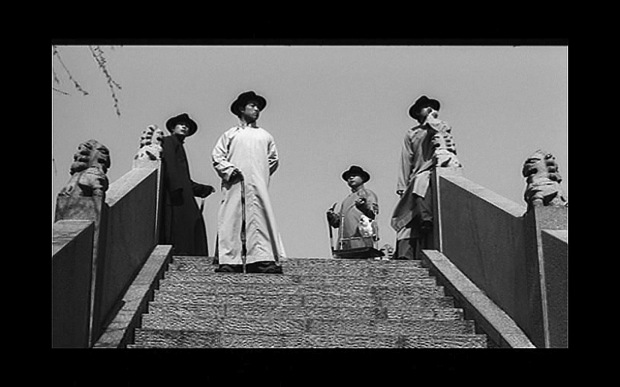
By projecting images onto eight screens, I hope that viewers will look at the screens one at a time, or jump from one to another, or watch one screen for one minute and then move onto another, or else see it to the end. You can also just sit there in a daze. Looking at eight screens you probably won't look at any one screen very closely. You can see it as eight movies or one-eighth of a movie. Maybe your vision is blurred when you are watching it, and you are probably thinking about other things; you are in a daze… but while you are in this dazed state, the sense that you are making of it in your mind, and your thoughts about other things, is another version of No Snow on the Broken BridgeCR: Can you talk about the role of animals and birds in the film? YFD: Animals are the same as people. They are living. They convey a feeling of life, an alternative life to humans. The mountain goat has a soul and the cockatoo has a heart/mind. They too live in the hills near West Lake. Like people they have a consciousness. When the mountain goat is being led and does not want to follow and kneels down on the ground, it is hard to say to what extent it is dependent on the person… [but] the cockatoo [tethered on a perch] is a pet and dependent on humans, it has become an aesthetic object... The status of the animals and birds has been conferred on them by people. It is difficult to understand whether it is bestowed out of feelings of benevolence or of cruelty, or whether they represent beauty, but it is a status that has been bestowed on them. CR: Could we talk about the editing of your films? YFD: Sometimes, after I have finished filming, I really don't want to look at the material straight away; there is a feeling of not wanting to touch any of it. That was particularly the case after filming Seven Intellectuals… Sometimes after filming you are left with a feeling of beauty: [the experience of] a group of people working closely together, on an island, living together for one month in order to make the film… Each day is very full, and as soon as the filming comes to an end you don't want to look at the material, at least not so quickly… Filming the way I do, sometimes [the material is] not particularly explicit, or there is no definite content or narrative... When it feels as though there has been sufficient time for the material to breathe, then it is ready to be looked at… If you start editing immediately after you have finished filming it may be that you are unable to appreciate good things that are there but which you did not feel were particularly interesting during the course of filming. So you need to pause. 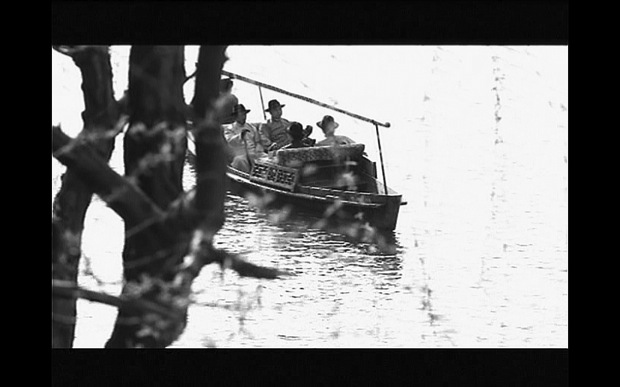
CR: Can you talk about the process of filming No Snow on the Broken Bridge, which I think you said took about two weeks? How flexible was the process? YFD: It's not really about being flexible. When you start filming you have already thought things through; for example, that there will be eight screens. There is an overall direction. And maybe you already know, in a broad sense, that the first screen will probably focus on mountains and the West Lake, that the second screen will have men, with some close-ups, and the third the water of West Lake and so on… They are filmed one by one, but when you are filming you are also thinking that when they are screened it may be that four screens all have scenes of West Lake at the same time. Things like this you have to think through in advance; that one of those screens will be to the left and another to the right and another somewhere else, and that when they are viewed as a whole, these screens will be together... . CR: Can you talk about the relationship between No Snow on the Broken Bridge and your earlier film Estranged Paradise—both filmed in Hangzhou? YFD: No Snow was filmed in 2006 and Estranged Paradise in 1997. Both were filmed in Hangzhou, which is regarded as a kind of Paradise. When I was making Estranged Paradise I loved Hangzhou. I was there for four years, at university. It was where I grew up. I felt great emotion towards the place… the West Lake, everything so beautiful. When I was making the film it was about the thoughts and ideas of young people, the anxiety of growing up, questioning, hope, the search for beliefs and ideals… in contrast to the reality of life. It was like the feeling of early spring when the days are cold but you can smell spring in the air. You can smell hope. It is a film about emotions associated with Hangzhou and about understanding life. To come back and film Hangzhou again [ten years later] it's no problem to film it, but in the process you realise the extent of change that has occurred. There are many more tourists and there has been a lot of reconstruction. Some beautiful places no longer exist. In the past, on a winter's day, you could sit on a rock next to a willow tree. It was a pleasant thing to do at lunchtime. Today, the tree emerges from a square hole in the pavement and is surrounded by a barricade. Everything has a railing around it. Every bit of nature has been fenced in. The surroundings have been beautified… but the effect is very ordinary. The slightly wild quality, a feeling associated with wind [that was so typical of Hangzhou], has gone. When I was filming [No Snow] I tried to find places that retained some of Hangzhou's former beauty.[5]… If we are still to call Hangzhou Paradise, then it has become an overly refined kind of Paradise… I made the right decision to attend the Zhejiang Academy of Fine Art [in Hangzhou, now called the China Academy of Art]. That school gave me the kind of education of which the benefits were impossible to see at the time. What's important is not who taught me to paint, but the aesthetic education that I received. It taught me about beauty. During that time it was not a question of what people painted or how good a painting was. Rather, what was passed on was something more fundamental, like 'spirit points' or spirit consciousness. Let me give you an example. While you might appreciate or accept something, even savour it, when it comes to building that tall building, to painting it, I would never use the brush-and-ink painting [techniques] of former times. That would be impossible. That is why some of the [artistic] principles are interesting. An architect might create a beautiful building in Shanghai, and you observe that the building is so postmodern, so avant-garde, and ask where his ideas for the building came from, and he responds with one sentence: the landscape paintings of Huang Binhong (黄滨虹 1865–1955). If he said that, I would believe him. [To me,] that is interesting. 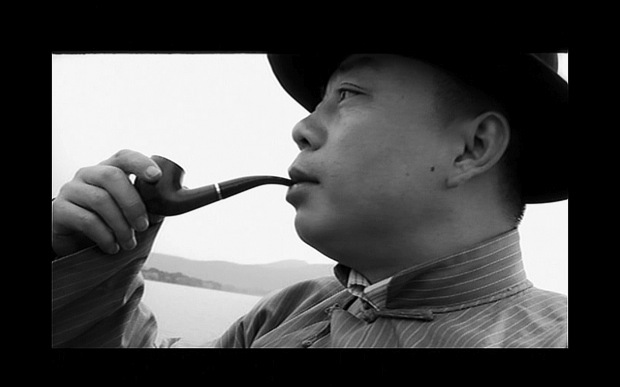
CR: I am fascinated by the feeling or mood that you create in your works, the way you make a connection with the past and yet at the same time deal with the aesthetic of the present. That is rare in contemporary Chinese art. YFD: Right now I am wondering about future work, what it will be like. I don't yet have a sense of that. After I finished shooting Seven Intellectuals [in 2007] there was a change, which included filming actual subjects, such as the Blue Kylin shot in Shandong [in 2008], and the dog piece [East of Que Village, 2007], things that were very real. Filming these works was very helpful. I can no longer make films with that Utopian feeling, or with what some have described as a formalist style. I hope that that feeling will subside. How to give thickness to the work is what I will be giving thought to in the future. CR: There is no real urgency. YFD: Actually, time is running out. My cohort is approaching forty, so the feeling is that there is probably only another ten years in which we have the energy [for this kind of work]. CR: What is your current status as an artist? YFD: I am an independent artist. But now I am teaching at the academy [in Hangzhou]. I haven't really thought through what this new status means. I need time to get used to it. There needs to be some readjustment … [Teaching] might provide a good opportunity to breathe. I want to slowly change my way of thinking. CR: How do you see your work in the context of Chinese and Western art? How would you place it? YFD: That is a difficult question. Perhaps I can answer in this way: the water in the oceans of the world is not categorised as being European or African, so if you are the water, the principle is the same; you cannot really say that you belong to a particular place. It is difficult to say definitively whether you are European or African. These days you can develop in any way you please. One's sphere of operation is extremely expansive, yet the actual environment in which you live is very small. This is the same for everyone. So, you respect and trust the moment in which you live and what you have. And you continue working according to your own thoughts and beliefs. If you are interested in moving forward, you need to be someone who is of the world. And if you want to continue to move forward you need to maintain an interested state of mind. Talking with friends, it seems that these past few years we have given more thought to the concept of tolerance. How is one to think about all sorts of things? By this I mean tolerance in relation to people, art and life. 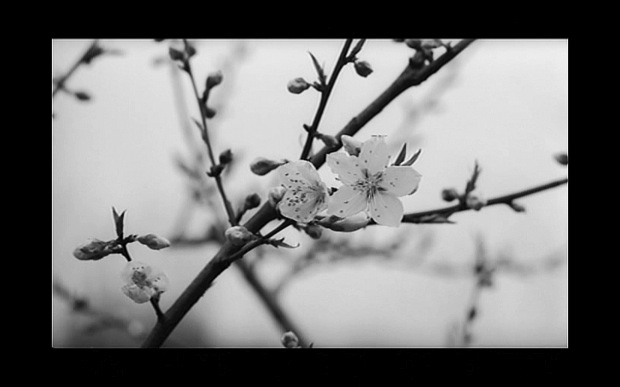
CR: You sound as though you are getting old. YFD: [Laughs] I'm not sure why I should be thinking in this way. But it is the way things are. CR: Will this be manifest in your art? YFD: Maybe. The idea of tolerance also relates to feelings. Some people have interpreted this as being about the importance of learning. There are so many things that you don't understand. You cannot say that, just because you don't understand something, it is no good or uninteresting. Rather, it is that you don't yet have the knowledge [to appreciate it]. Why is it that so many people use the phrase 'live long, study long'? We are often functioning in a state of ignorance. It may be that you have done something in a particular area that is interesting, but that is not to say that you have become all-knowing. In this context, tolerance includes an element of self-awareness. 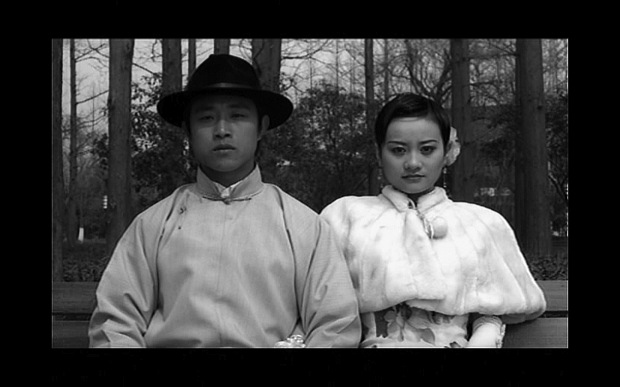
CR: Are you an idealist? YFD: Not really. Who knows? I will take things slowly, and as they come. I am not quite sure how I will proceed with my work. CR: That is something many of us are unsure of. YFD: That's right. If we knew, then that would be a problem. CR: And if we knew it would not be so interesting. YFD: Yes. But from now on things will be more difficult because of the differential in relation to the courage that comes with youth. Growing up has its own difficulties and requires a different kind of courage. When you start maybe you only have five dollars. You buy a roll of film, borrow a friend's camera and go off and take a few shots. But going off and shooting now, the problems that you face are different. Now what you need to do is try and maintain the state of mind you had when you only had five dollars. That is quite difficult.
Notes:[1] See www.yangfudong.com/info/album.htm, accessed 12 January 2011. This introduction draws on conversations and interviews with Yang Fudong on 28 November 2010 and 14 January 2011. [2] 'Lingering Snow on the Broken Bridge' (Duan qiao can xue) refers to the historic Duan Family Bridge, located on the eastern end of the Bai Causeway at the West Lake in Hangzhou. Duan is a surname, but a different Chinese character with the same pronunciation means 'broken'. While the bridge is thought to date from prior to the seventh century, the poetic scene that it evokes, known as one of 'Ten Famous Views of the West Lake', dates from the tenth century, when Hangzhou was the capital of the Southern Song Dynasty (1127–1279). The snow-clad landscape and dark lake evoke the beauty of jade and crystal, or a brush-and-ink painting. A tourist plaque erected at the site describes the scene as follows: 'Standing on top of Baoshi Hill, one can have a bird's eye view of the beautiful scenery to the south: Bai Causeway lying beneath a blanket of snow looks like a long silver chain across the lake, which seems to break up abruptly when it reaches the end of the causeway, where the dark surface of the bridge emerges from the melting snow, evoking the magical scene of the "bridge breaking as the snow melts".' The phrase canxue, or 'lingering snow', may also be translated as 'the dirty snow that refuses to melt', implying a relentless kind of melancholy. The site is also associated with the 'Legend of the White Snake', a popular folktale about a white snake that took the form of a beautiful girl and fell tragically in love with a young man. [3] The May Fourth Movement arose from student demonstrations in Beijing in May 1919. The students protested against the treatment of China in the Treaty of Versailles, which ended World War One, and the Chinese Government's weak response. [4] The Republican period spans the years 1912 to 1949, after the fall of the Manchu-Qing dynasty in 1911 and prior to the establishment of the People's Republic of China in 1949. [5] No Snow on the Broken Bridge was filmed in 'Lotus in the Breeze at the Crooked Courtyard' (Qu yuan feng he 曲院风荷), the site of a former imperial winery and another of the 'Ten Famous Views of the West Lake'; Guo's Villa (Guo Zhuang 郭庄), a garden villa by the West Lake built in 1851; and the tea fields above Longjing 龙井 at Jiuxi. |